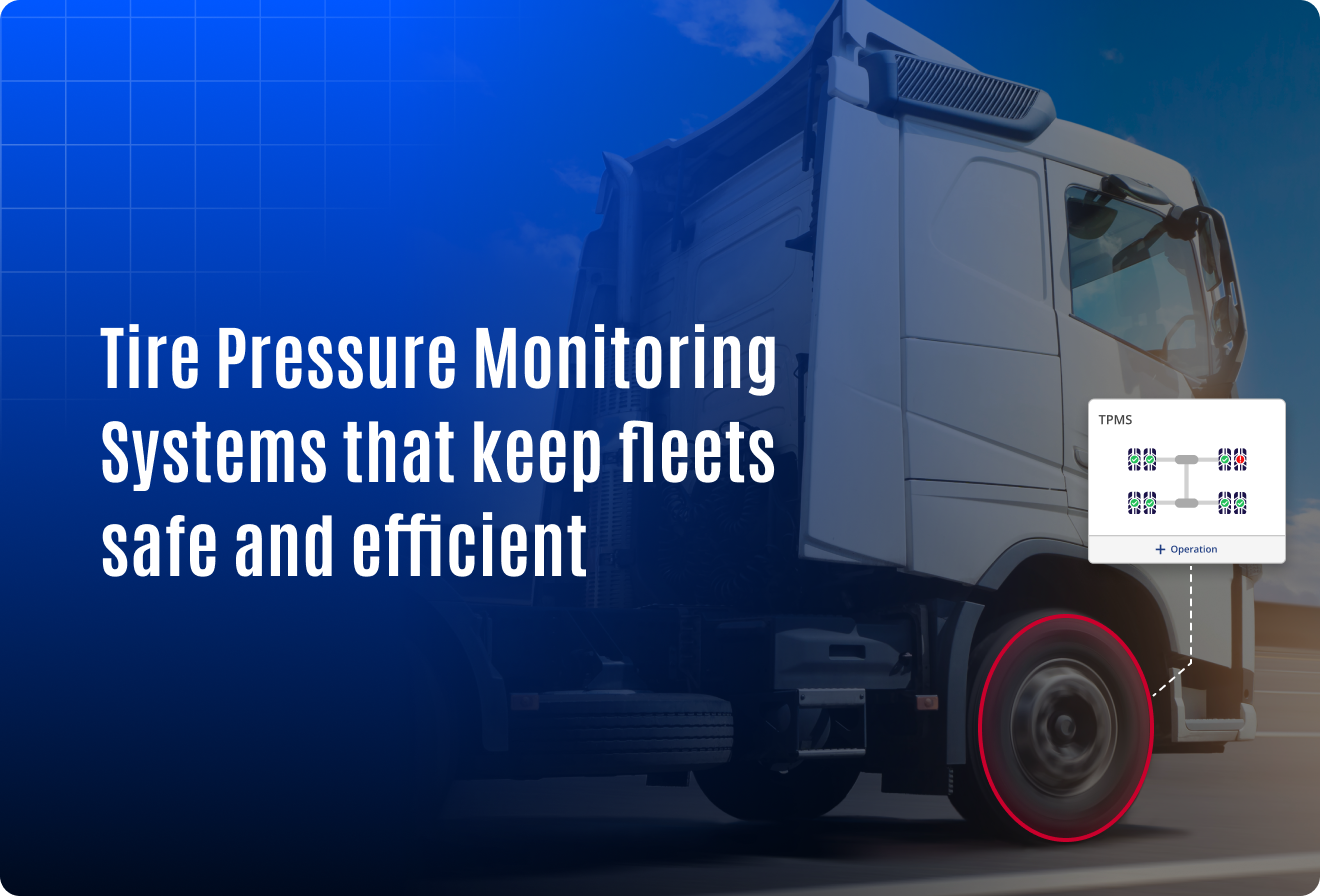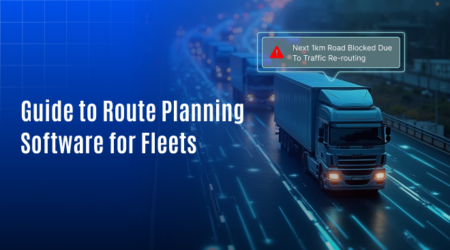Tire pressure monitoring systems that make fleets safer and more reliable

Tire-related issues are a major contributor to fleet inefficiencies, second only to fuel in terms of operational costs. Studies indicate that nearly 30% of all truck breakdowns are caused by tire failures, with underinflated tires alone reducing fuel efficiency by up to 3%. In high-mileage fleets, this translates into significant financial and safety risks. Poor tire pressure management not only increases the chances of blowouts but also leads to uneven wear, frequent replacements, and unplanned downtime. To address these challenges, fleet operators are increasingly turning to tire pressure monitoring systems. These systems provide real-time insights into tire health, allowing managers to take proactive steps toward safer, more efficient operations. By combining live pressure and temperature tracking with intelligent alerts and historical analytics, tire pressure monitoring systems are transforming the way fleets manage one of their most critical assets.
Why tire pressure matters in fleet operations
Maintaining the correct tire pressure is critical for both safety and cost-efficiency in fleet management. Research shows that a tire operating just 10 percent below its recommended pressure can lead to a 1 percent drop in fuel economy and a 15 percent reduction in tire lifespan. For large fleets, this can result in thousands of dollars in avoidable expenses each year.
Incorrect tire pressure increases rolling resistance, causes uneven tread wear, and raises the risk of blowouts, especially under high loads or long-distance operations. It also compromises vehicle handling and braking performance, putting drivers and cargo at risk. Manual pressure checks are time-consuming and often inconsistent, making them unreliable for high-volume operations.
With tire pressure monitoring systems, fleet managers can maintain optimal pressure levels across all vehicles. These systems reduce the need for manual inspections, lower the chances of accidents, and support consistent fuel efficiency. Ultimately, they play a key role in improving vehicle performance, reducing downtime, and extending tire life.
Key features of TPMS in fleet software
Modern tire pressure monitoring systems are integrated into advanced fleet software to provide real-time visibility, proactive alerts, and complete control over tire health. These systems offer a range of functionalities designed for high-performance fleet operations.
- Real-time pressure and temperature tracking
The system continuously monitors tire pressure and temperature, helping prevent underinflation, overheating, and blowouts during trips. - Object-wise tire data
Fleet managers can access individual tire details for each vehicle, including serial number, tire position, pressure status, and last inspection date. - Automated alerts for abnormal conditions
Instant alerts are generated whenever a tire crosses safe pressure or temperature thresholds. This ensures issues are addressed before they affect operations. - Historical log summaries
All pressure readings are logged over time. These historical data records help identify certain patterns and detect recurring issues. This additionally supports preventive maintenance planning. - Mobile inspection and reporting tools
Drivers and technicians can inspect tires using a mobile app and record any issues immediately. This makes the inspection process faster, more accurate, and fully traceable. - Integration with tire wear and usage data
The system links pressure monitoring with tread depth logs, predicted mileage reports, and wear trends. This combined view improves decision-making around replacements and tire rotation.
These features empower system integrators to deliver intelligent, value-added tire solutions that help fleet operators reduce risks, lower costs, and operate more efficiently.
Safety benefits of TPMS for fleet software users and system integrators
The integration of tire pressure monitoring systems into fleet software is not just about efficiency. It plays a crucial role in enhancing road safety for drivers, vehicles, and cargo. By offering accurate, real-time data and automated alerts, TPMS helps fleets prevent critical tire-related failures before they occur.
- Prevention of tire blowouts
By continuously monitoring tire pressure and temperature, potential issues like slow leaks, excessive heat, or rapid pressure loss can be identified early. This proactive approach helps prevent tire blowouts, reducing the risk of accidents and vehicle damage. - Improved braking and vehicle stability
Properly inflated tires support better handling, steering control, and braking response. This is especially important for fleets carrying heavy loads or operating in high-traffic areas. - Proactive issue resolution through alerts
Instant notifications allow fleet managers to act immediately when tire conditions become unsafe. Early intervention reduces risk on the road and ensures vehicles are pulled out of operation only when necessary. - Support for routine inspections and compliance
With digital inspection logs and pressure records, fleet managers can maintain a complete audit trail of tire health. This supports safety regulations and inspection compliance with ease. - Minimized downtime and operational disruptions
By preventing tire-related breakdowns, TPMS ensures vehicles stay on the road and schedules remain uninterrupted. For industries like logistics, mining, and school transport, this directly translates to fewer delays and improved safety records.
For system integrators, offering software equipped with TPMS strengthens the safety proposition and builds long-term trust with clients. It reflects a proactive approach to fleet health, positioning their solution as both practical and responsible.
Conclusion
Tires are one of the most vital yet vulnerable components in fleet operations. Without proper monitoring, even a small pressure drop can lead to serious safety incidents, increased fuel consumption, and unnecessary downtime. That’s why tire pressure monitoring systems have become essential for modern fleets.
By providing real-time visibility, instant alerts, and historical performance insights, TPMS helps fleet managers make faster, safer, and more cost-effective decisions. When integrated with software that also tracks tire wear, temperature, and predicted lifespan, the result is a complete tire health solution.
For system integrators, adding TPMS to their offering delivers unmatched value. It enhances safety, reduces client expenses, and positions their solution as a complete, data-driven platform. In today’s competitive fleet environment, TPMS is not an add-on. It is a must-have feature for reliability, safety, and long-term success.



